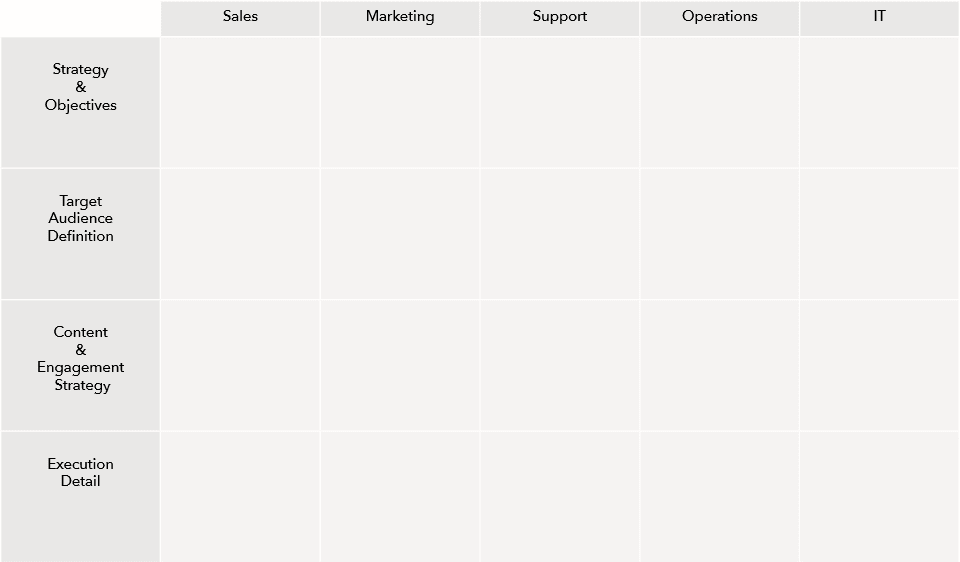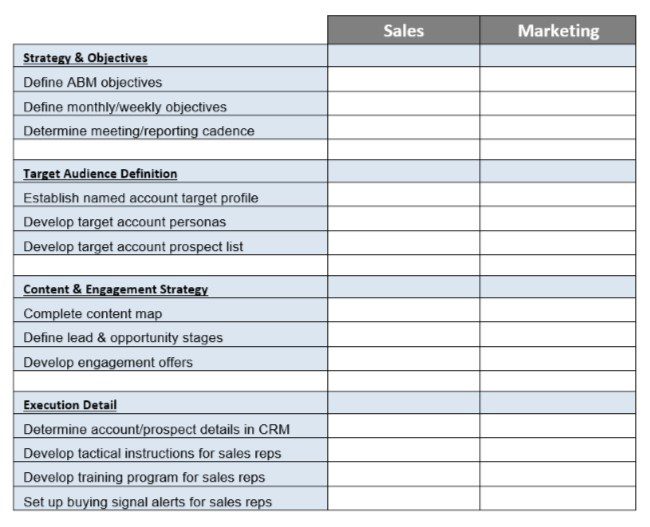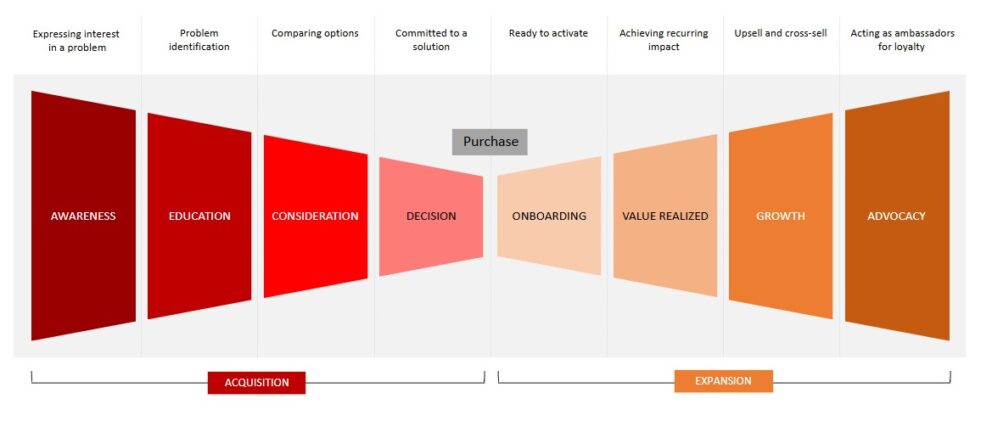The Ideal Sales and Marketing Relationship for ABM Success

By Brenna Lofquist, Marketing Consultant at Heinz Marketing
Account Based Marketing (ABM) has been a hot topic in the B2B Marketing world within the past year or so. Companies are transitioning from casting a wide net to bring in as many leads as possible to targeting specific, key accounts that fit a predefined criteria.
A little more background on ABM
For those that might not be as familiar
The predefined criteria usually represent a company’s Ideal Customer Profile (ICP), a holistic representation of the types of companies that best fit their product offerings or services. This goes back to the important distinction of ABM – the focus is on targeting companies, not individuals.
Messaging and content are tailored to align with the company’s unique interests and needs which is a different approach from traditional inbound marketing where the focus is on targeting buyer personas at the individual level.
The disconnect
Essentially with ABM you are asking sales to work with fewer leads and going against the traditional notion that a full sales funnel drives success – I can’t imagine that would make them very happy. It’s no secret that sales and marketing tend to butt heads – while they are working toward the same goals they often operate in silos. Without sales buy-in though, your ABM program will fall flat and then what are you left with?
SiriusDecisions found that only 36% of companies deploying ABM consider sales and marketing tightly aligned, leading to an ineffective ABM design and execution. Let’s be honest, no one likes it when someone comes in and tells them to change their process, but for this to work, something must be done to build the trust between sales and marketing so they can work in unison towards the same objectives.
Getting Sales and Marketing on the same page
There are a few things a company can do to help better align sales and marketing when it comes to ABM.
Reinforcement of the goals and objectives is key. Sales must know that Marketing is on the same page when it comes to the goals they are trying to reach through ABM efforts. Both teams are trying to provide valuable, meaningful interactions with target accounts to ultimately drive sales and more revenue. The quicker both teams realize they are working toward the same goal and it’s not one team over the over, the sooner they can execute a successful ABM program.
Define the roles and responsibilities of each team. This should create a clear idea of who is responsible for what, especially when something falls through the cracks. It also provides a platform for holding one another accountable.
Here are two examples you can use. The first one is a simple table that outlines the major areas and responsibilities – you can also include teams such as support, operations, and IT so you have the full picture.
The second example provides more detail within each area of responsibilities. This example was taken from the ABM Workbook we developed with Integrate. Look here if you are interested in other aspects of ABM.
Once filled out, this should be discussed with both teams to walk through the responsibilities and what’s expected of each team.
Schedule regular meetings with sales and marketing teams. This should allow for continuous, seamless alignment. The facetime will also continue to build trust between the two teams and hopefully strengthen the relationship. Talk through what’s working and what’s not for each and identify ways to improve, this collaborative effort will also to help strengthen the relationship.
I can’t stress enough how important it is that sales and marketing work together when it comes to ABM. If you think you can get by without sales onboard, think again. Check out some statistics that RollWorks put together, if you still don’t believe it.
One stat they found was that 66% of companies have reported that the key benefit of ABM is an increase in pipeline opportunities thanks to closer work between sales and marketing.
Here’s one for the sales teams out there. ABM helps reduce up to 50% of sales time wasted on unproductive prospecting, which historically caused sales to ignore 50% of marketing leads.
By no means am I saying that one team is the issue or the blocker when it comes to ABM, I am just trying to explain the importance of the two teams working together. If successful alignment occurs, it will not only be beneficial for both teams but the company as a whole – everyone will be happy.
What have you done to ensure alignment between sales and marketing for ABM efforts? Was it successful? Let us know!








